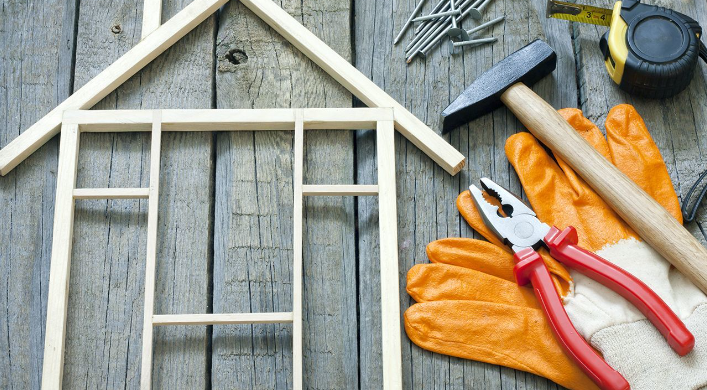Homeowners often dream of renovating their living spaces to reflect their personal styles and enhance comfort. However, the path to achieving these dreams often involves financial considerations that can seem overwhelming.
This blog post aims to demystify home improvement financing, providing valuable insights for homeowners and tips for financial advisors guiding their clients.
Understanding Home Improvement Financing
Home improvement financing covers a variety of funding options available to homeowners looking to renovate, remodel, or make significant repairs to their homes.
These financing options can come from banks, credit unions, government programs, and private lenders. The key is to find the right type of financing that aligns with your budget, project scope, and long-term financial goals.
Why Consider Home Improvement Financing?
- Increase Property Value:
By investing in home improvements, you can significantly boost the market value of your home. Upgrades like a new kitchen, bathroom remodel, or energy-efficient windows can offer a high return on investment.
- Enhance Comfort and Functionality:
Home improvements can transform your living space into a more comfortable and functional environment. Whether it’s adding an extra room, upgrading your HVAC system, or landscaping your backyard, these enhancements can improve your quality of life.
- Address Necessary Repairs:
Some home improvements are essential for the safety and maintenance of your property. Financing options can help you address critical repairs, such as fixing a leaky roof, replacing old plumbing, or installing a new electrical system.
Types of Home Improvement Financing
1. Home Equity Loans
Home equity loans allow you to borrow against the equity you’ve built up in your home. They typically offer fixed interest rates and predictable monthly payments, making them a popular choice for large projects.
2. Home Equity Line of Credit (HELOC)
A HELOC is a revolving line of credit secured by your home’s equity. It functions much like a credit card, allowing you to draw funds as needed up to a certain limit. This option offers flexibility for ongoing or multiple projects.
3. Personal Loans
Personal loans are unsecured loans that can be used for a variety of purposes, including home improvements. They usually come with higher interest rates compared to home equity loans, but they don’t require you to use your home as collateral.
4. Government Loans and Grants
Various government programs offer loans and grants to assist homeowners with home improvements. For example, the FHA 203(k) loan program allows you to include the cost of repairs and renovations in your mortgage. Additionally, the USDA provides loans and grants for rural home improvements.
5. Credit Cards
For smaller projects, using a credit card might be a viable option. Many credit cards offer promotional periods with low or zero interest rates. However, it’s crucial to pay off the balance within the promotional period to avoid high interest charges.
Tips for Financial Advisors
1. Assess Client Needs
Understanding your client’s specific needs and financial situation is critical. Discuss their renovation goals, budget constraints, and long-term plans to identify the most suitable financing options.
2. Educate Clients on Options
Many homeowners are unaware of the various financing options available. Educate your clients on the pros and cons of each financing type, considering factors like interest rates, repayment terms, and potential tax benefits.
3. Evaluate Credit Health
Advise your clients to check their credit scores before applying for financing. A higher credit score can qualify them for lower interest rates and better loan terms. If needed, recommend steps to improve their credit health before proceeding with an application.
4. Plan for Contingencies
Encourage your clients to factor in unexpected costs and build a buffer into their budget. Home improvement projects often encounter unforeseen expenses, and having a contingency plan can prevent financial strain.
5. Custom Home Building in Utah
For those considering a custom home building in Utah, financing options are also available. Whether it’s building a new home from scratch or making significant additions to an existing property, financial advisors can guide clients through the specialized financing options tailored for custom home projects.
Conclusion
Home improvement financing can turn your renovation dreams into reality. By understanding the various financing options and working closely with a financial advisor, you can make informed decisions that align with your financial goals.
Don’t let budget constraints hold you back from creating the home of your dreams. Explore your options, plan strategically, and take the first step toward a more beautiful and functional living space.






